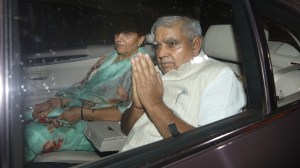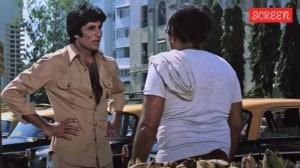Military Digest | Conqueror of Ladakh and invader of Tibet: General Zorawar Singh Kahluria
If at all a statue had to be put up on the banks of Pangong Tso, the legendary Dogra warrior’s name would top the list of those deserving the recognition.
 The bust of General Zorawar Singh inaugurated by the lieutenant governor of Jammu and Kashmir at Jammu in 2023 (File photo).
The bust of General Zorawar Singh inaugurated by the lieutenant governor of Jammu and Kashmir at Jammu in 2023 (File photo).
A controversy arose in the last week of December 2024 when the general officer commanding of 14 Corps inaugurated a statue of Maratha warrior Chhatrapati Shivaji Maharaj on the banks of the Pangong Tso lake in Ladakh. A chorus of protests emerged from retired generals, Ladakhis and Dogras, with each group questioning the statue’s location and suggesting that other heroic figures could have been a better choice, if a statue was to be erected there at all.
One name frequently suggested was that of legendary Dogra warrior Zorawar Singh, who captured Ladakh and made forays deep into Tibet, crossing this very Pangong Tso lake. In this week’s column, we will take a brief look at the life and career of this extraordinary general, a wazir of Raja Gulab Singh of Jammu, who was a feudatory of Maharaja Ranjit Singh, the Sikh ruler of Khalsa Raj in Punjab.
A comprehensive account of General Zorawar Singh has been written by Dr C L Datta, formerly of the Department of History, Panjab University, Chandigarh, and it serves as a good reference point for the life and times of this great soldier and military commander.
There are different accounts regarding the birth of Zorawar Singh. While some say he was born in Ansara village of Hamirpur district in Himachal Pradesh, others claim he was a native of Kussal near Reasi in Jammu and Kashmir. Gulab Nama, a contemporary account of those times, refers to him as Zorawar Singh Kahluria, lending support to the assertion that he was from a Rajput clan and a descendant of the Kahluria Mians.
Four forays into Ladakh
Zorawar Singh is said to have joined the service of Raja Gulab Singh, who was allowed to maintain an army by Maharaja Ranjit Singh for the defence of his jagir, and was appointed the governor of Riasi and later Kishtwar and Kussal. He honed his and his Dogra soldiers’ military skills during this period in the early 1800s, which stood him in good stead in his subsequent forays into Skardu and Ladakh.
A military campaign to bring the Ladakhi kingdom to its knees was launched by Zorawar Singh in 1834 from his headquarters in Kishtwar with a small army of 5,000 well-trained soldiers, many of them Muslims. The contingent marched through the Wurdwan valley, Maryam La, and reached Suru, where they defeated a Ladakhi force of around 5,000 soldiers.
Dr Datta writes that having consolidated himself at Suru, the Dogra general defeated another Ladakhi force at Pashkym. He would have pushed on further, but he received news that a British agent of the East India Company was in Leh. Under the Sutlej Treaty of Maharaja Ranjit Singh with the British, there should have been no British presence in Ladakh, and here Zorawar Singh paused and raised a query with Raja Gulab Singh, who in turn raised it with Maharaja Ranjit Singh. Once the British clarified that the presence was an anomaly, the go-ahead was given to Zorawar to proceed, but winter had set in by then.
In the meantime, peace negotiations had begun with the Ladakhi King Tse-Pal Nam-Gyal, which broke down, leading to another clash between the Dogra contingent and Ladakhi soldiers, where the former again performed better. The Dogras reached Mulbe and then, via Kharbu, arrived in Lamayuru in April 1835. The Ladakhi king sued for peace and Zorawar Singh and his army marched into Leh, making the Ladakhi king a vassal of Raja Gulab Singh and, through him, that of Maharaja Ranjit Singh. In October 1835, General Zorawar Singh marched back to Kishtwar.
Hardly had he returned when Zorawar learned of a rebellion by the Ladakhi king. Despite it being peak winter, he began another march back in November 1835 to Leh, this time through the Zanskar region. The king was deposed and a new one was placed on the throne. Zorawar strengthened the position of the Dogras in Leh and constructed a large fort, which remains to this day and is known as the Zorawar Fort. In total, Zorawar carried out four invasions of Ladakh, quelling rebellions each time before proceeding to annex Baltistan.
“By 1840, the Dogras had conquered Ladakh and Baltistan and had established their authority in these lands. They were ready for fresh conquests. General Zorawar Singh now thought of establishing an empire in (Chinese) Turkestan… his expansion towards Gilgit having been discountenanced by the Sikh Nazim of Kashmir, his only path for expansion in the circumstances lay north and north-east of Ladakh—towards Yarqand and Western Tibet,” writes Dr Datta.
Exploits in Tibet
General Zorawar himself led a column in the invasion of Tibet and with nearly 3,000 soldiers, following the route to the south of the Pangong lake, he invaded Rudok and conquered it in June 1841. “There was little resistance, the fort was completely sacked and the Tibetan local governor of Rudok made a prisoner. Here, in addition to other articles of booty, some ammunition also fell into the hands of the invaders. From Rudok, the Dogra force advanced by detachments towards Gartok, the district headquarters of West Tibet. Since the place had been evacuated by the Tibetans, it was conquered without any difficulty,” writes Dr Datta.
General Zorawar’s exploits in Tibet are too vast to be recounted in this limited space, but it is quite evident that if at all a statue had to be put up on the banks of Pangong Tso, his name would top the list of those deserving the recognition.











